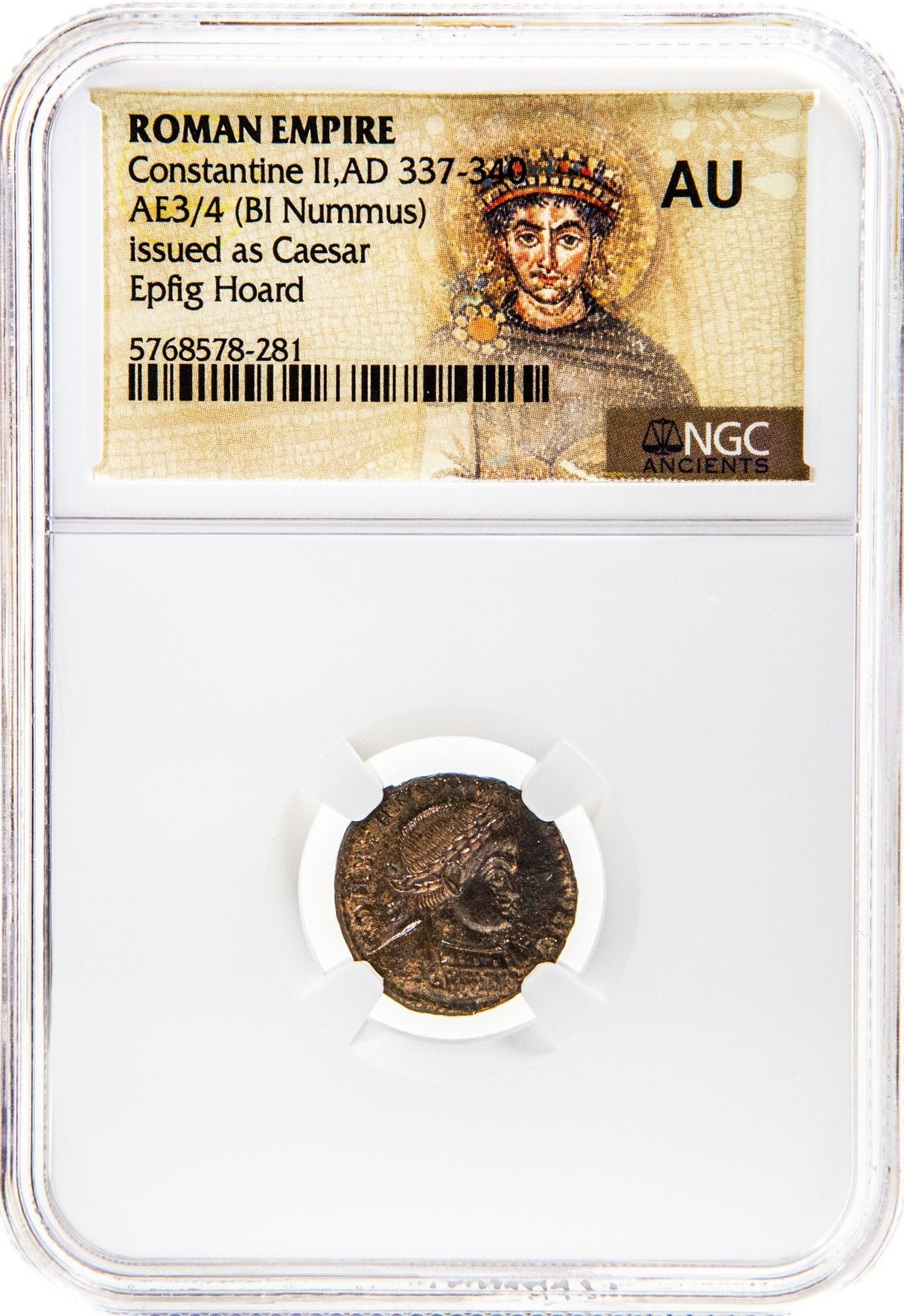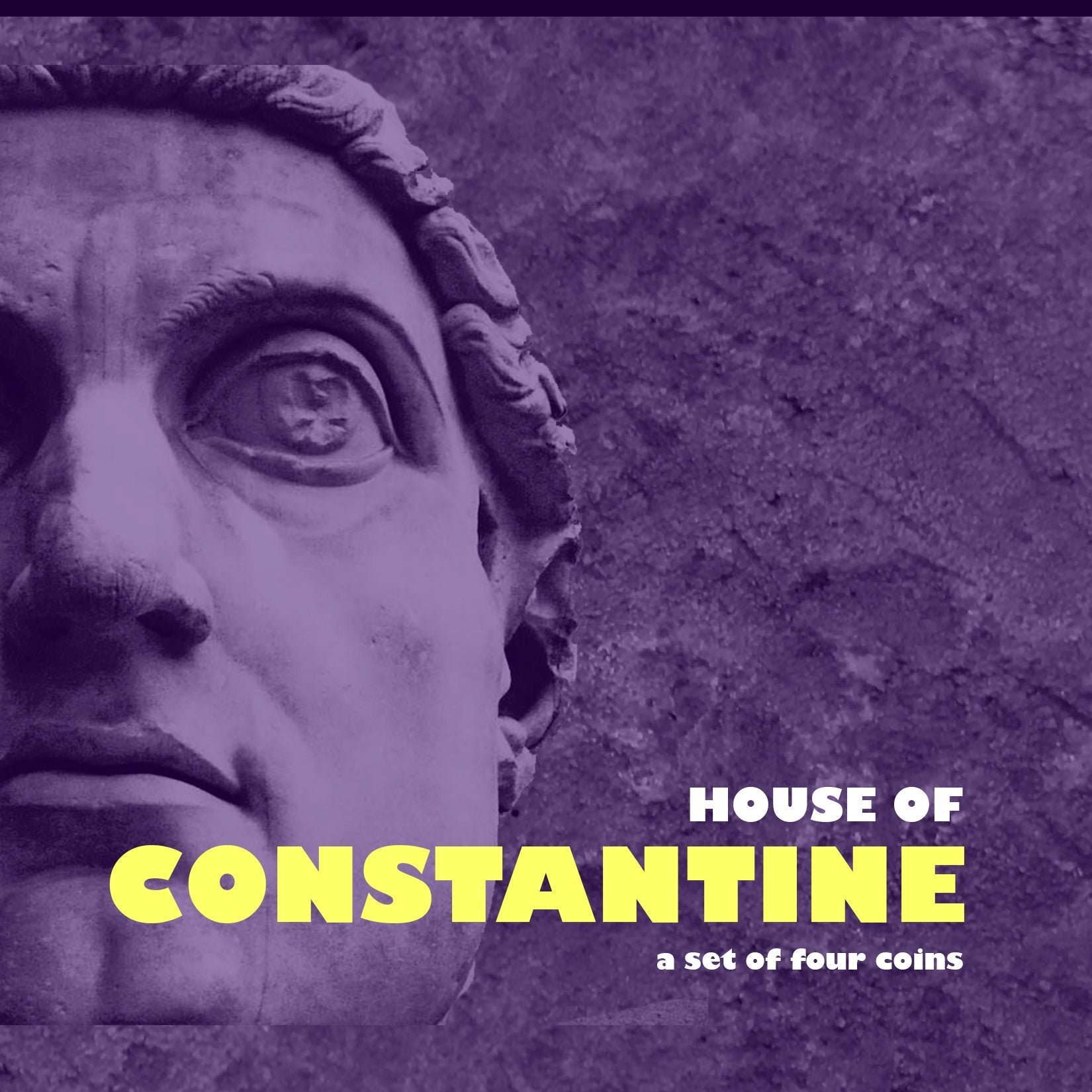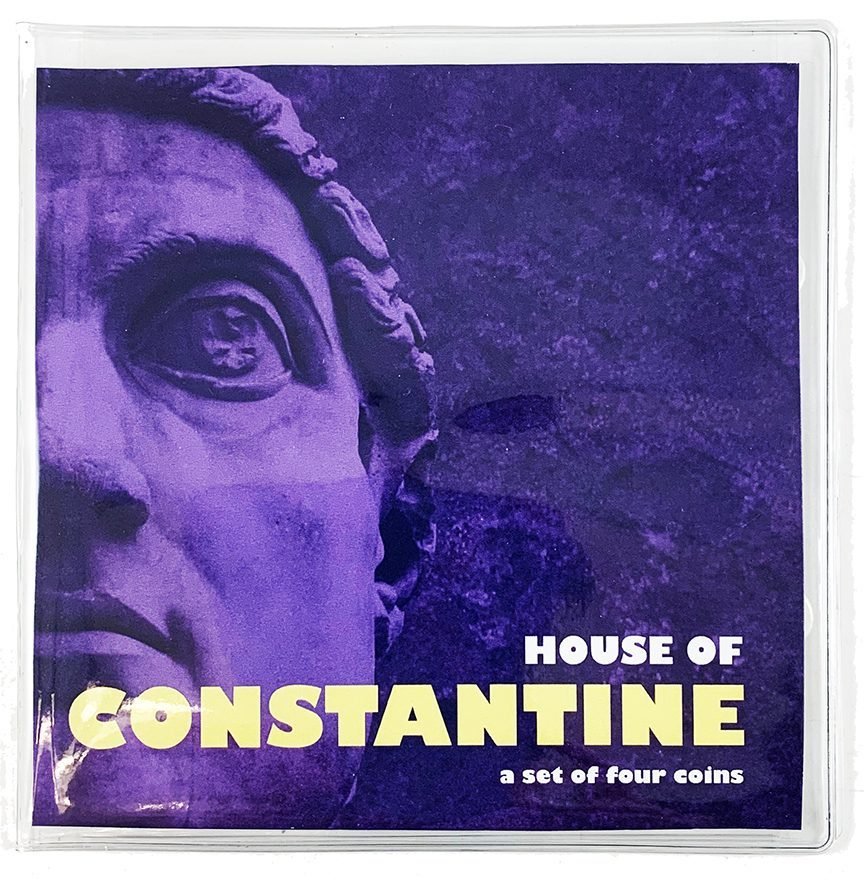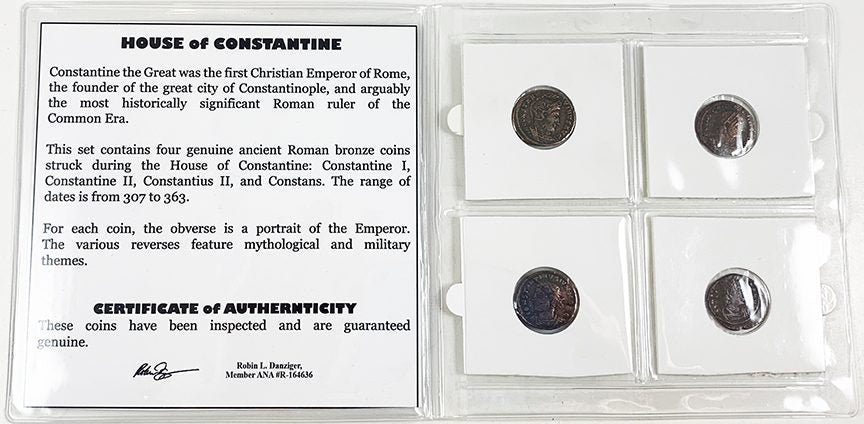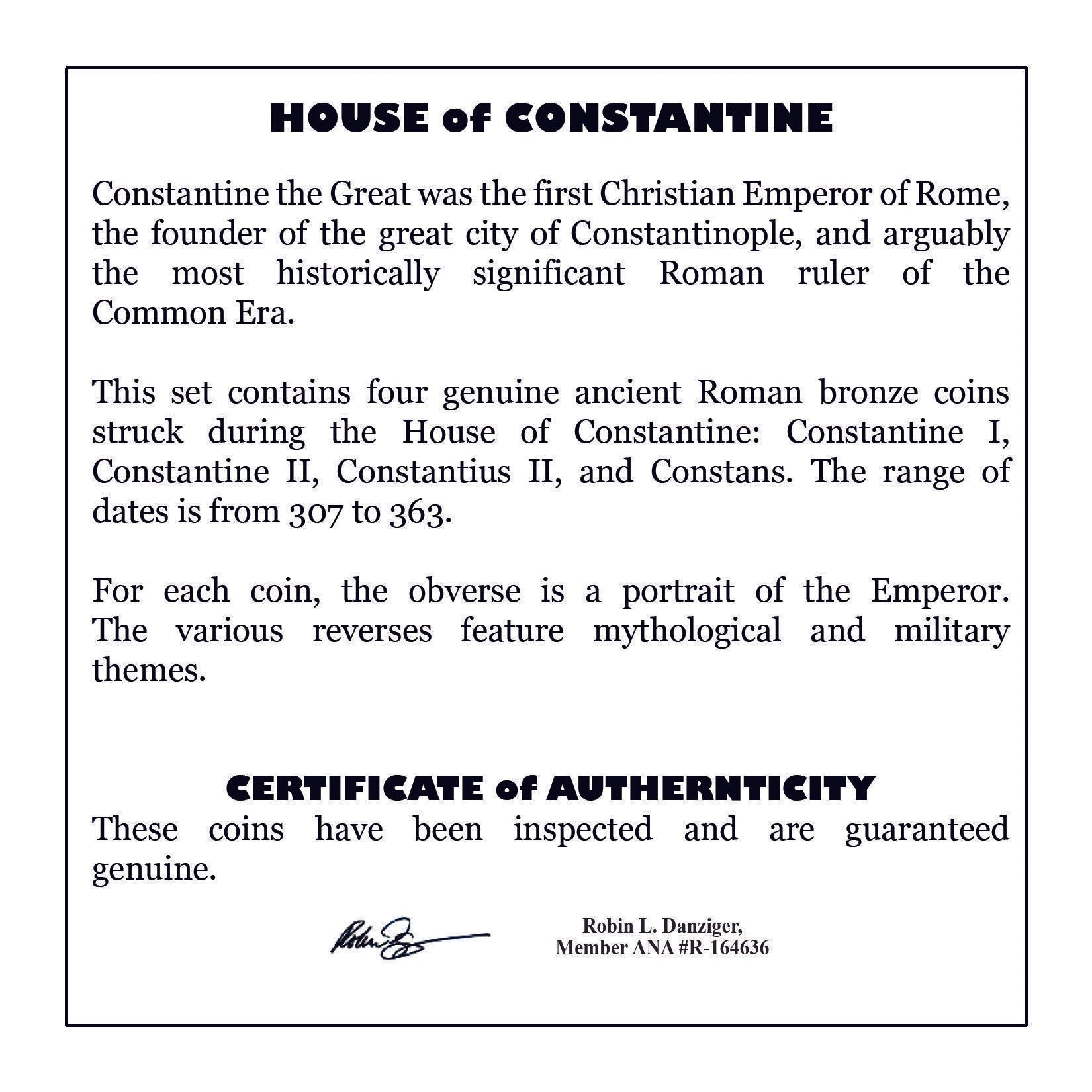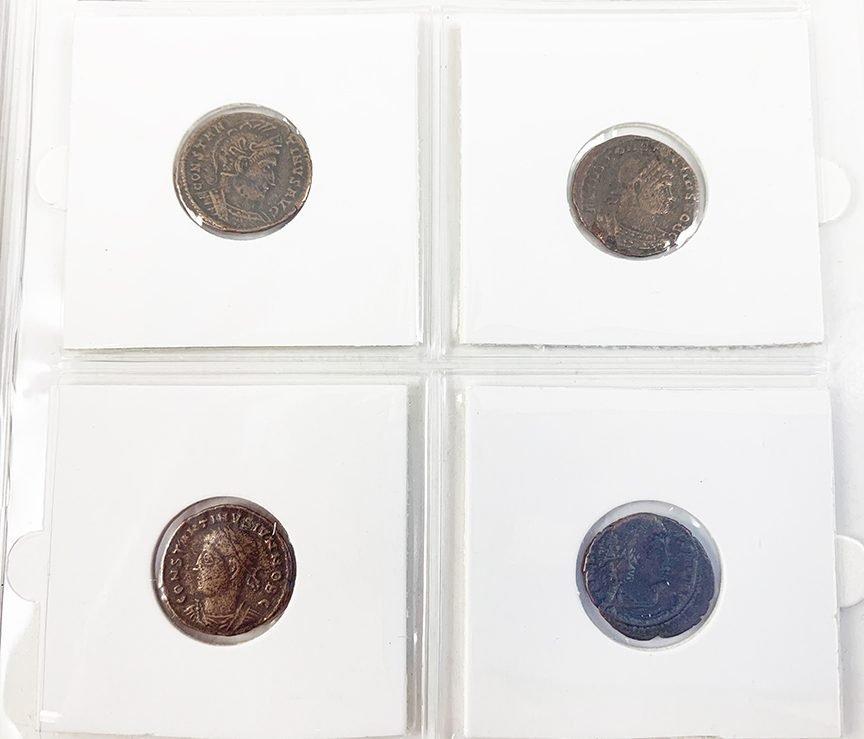Roman Provincial Billon Tetradrachm (Large Silver-Alloy Coin) of Emperor Hostilian (about 1770 years ago)
This billon (silver-copper alloy) tetradrachm was minted in 251 AD at Antioch (modern Antakya, Turkey) during the brief reign of Emperor Hostilian.
Front Side: Shows the draped bust of Hostilian with bare head facing right, seen three-quarters forward, with an "S" under the bust and the Greek inscription "G OUAL OSTILIAN ME KUINTOS KESAR" (Caius Valens Hostilianus Messius Quintus Caesar)
Back Side: Features an eagle standing left on a palm branch with wings outstretched, head left and tail right, holding a wreath in its beak, with the Greek inscription "DHMARC EX OUSIAS" (Entrusted with tribunician power) and "S C" in the exergue (space below the main design)
Technical Details: Size: 26mm diameter
Weight: 12.64 grams Orientation: 6h (die axis)
Metal: Billon (silver-copper alloy)
Rarity: R3 (very rare)
References: Prieur 650 (5 ex) - McAlee 1160 d (this exact coin) Condition: Well-centered on both sides with visible graining, dark gray patina with golden metallic reflections
Historical Significance: Hostilian was the younger son of Emperor Trajan Decius who briefly held power in 251 AD. While his father and older brother were fighting (and dying) against the Goths, Hostilian remained in Rome with his mother. This coin was minted during his extremely brief reign before he died of plague later that same year. The eagle symbolism represented Roman imperial power, while the Greek inscriptions reflect the eastern, Hellenized nature of Antioch. This extremely rare provincial coin is of particular historical importance due to the brevity of Hostilian's reign and is listed in scholarly references with only eleven known examples globally, including this specimen which is illustrated in Richard McAlee's definitive work on the coinage of Antioch.
This billon (silver-copper alloy) tetradrachm was minted in 251 AD at Antioch (modern Antakya, Turkey) during the brief reign of Emperor Hostilian.
Front Side: Shows the draped bust of Hostilian with bare head facing right, seen three-quarters forward, with an "S" under the bust and the Greek inscription "G OUAL OSTILIAN ME KUINTOS KESAR" (Caius Valens Hostilianus Messius Quintus Caesar)
Back Side: Features an eagle standing left on a palm branch with wings outstretched, head left and tail right, holding a wreath in its beak, with the Greek inscription "DHMARC EX OUSIAS" (Entrusted with tribunician power) and "S C" in the exergue (space below the main design)
Technical Details: Size: 26mm diameter
Weight: 12.64 grams Orientation: 6h (die axis)
Metal: Billon (silver-copper alloy)
Rarity: R3 (very rare)
References: Prieur 650 (5 ex) - McAlee 1160 d (this exact coin) Condition: Well-centered on both sides with visible graining, dark gray patina with golden metallic reflections
Historical Significance: Hostilian was the younger son of Emperor Trajan Decius who briefly held power in 251 AD. While his father and older brother were fighting (and dying) against the Goths, Hostilian remained in Rome with his mother. This coin was minted during his extremely brief reign before he died of plague later that same year. The eagle symbolism represented Roman imperial power, while the Greek inscriptions reflect the eastern, Hellenized nature of Antioch. This extremely rare provincial coin is of particular historical importance due to the brevity of Hostilian's reign and is listed in scholarly references with only eleven known examples globally, including this specimen which is illustrated in Richard McAlee's definitive work on the coinage of Antioch.
This billon (silver-copper alloy) tetradrachm was minted in 251 AD at Antioch (modern Antakya, Turkey) during the brief reign of Emperor Hostilian.
Front Side: Shows the draped bust of Hostilian with bare head facing right, seen three-quarters forward, with an "S" under the bust and the Greek inscription "G OUAL OSTILIAN ME KUINTOS KESAR" (Caius Valens Hostilianus Messius Quintus Caesar)
Back Side: Features an eagle standing left on a palm branch with wings outstretched, head left and tail right, holding a wreath in its beak, with the Greek inscription "DHMARC EX OUSIAS" (Entrusted with tribunician power) and "S C" in the exergue (space below the main design)
Technical Details: Size: 26mm diameter
Weight: 12.64 grams Orientation: 6h (die axis)
Metal: Billon (silver-copper alloy)
Rarity: R3 (very rare)
References: Prieur 650 (5 ex) - McAlee 1160 d (this exact coin) Condition: Well-centered on both sides with visible graining, dark gray patina with golden metallic reflections
Historical Significance: Hostilian was the younger son of Emperor Trajan Decius who briefly held power in 251 AD. While his father and older brother were fighting (and dying) against the Goths, Hostilian remained in Rome with his mother. This coin was minted during his extremely brief reign before he died of plague later that same year. The eagle symbolism represented Roman imperial power, while the Greek inscriptions reflect the eastern, Hellenized nature of Antioch. This extremely rare provincial coin is of particular historical importance due to the brevity of Hostilian's reign and is listed in scholarly references with only eleven known examples globally, including this specimen which is illustrated in Richard McAlee's definitive work on the coinage of Antioch.








